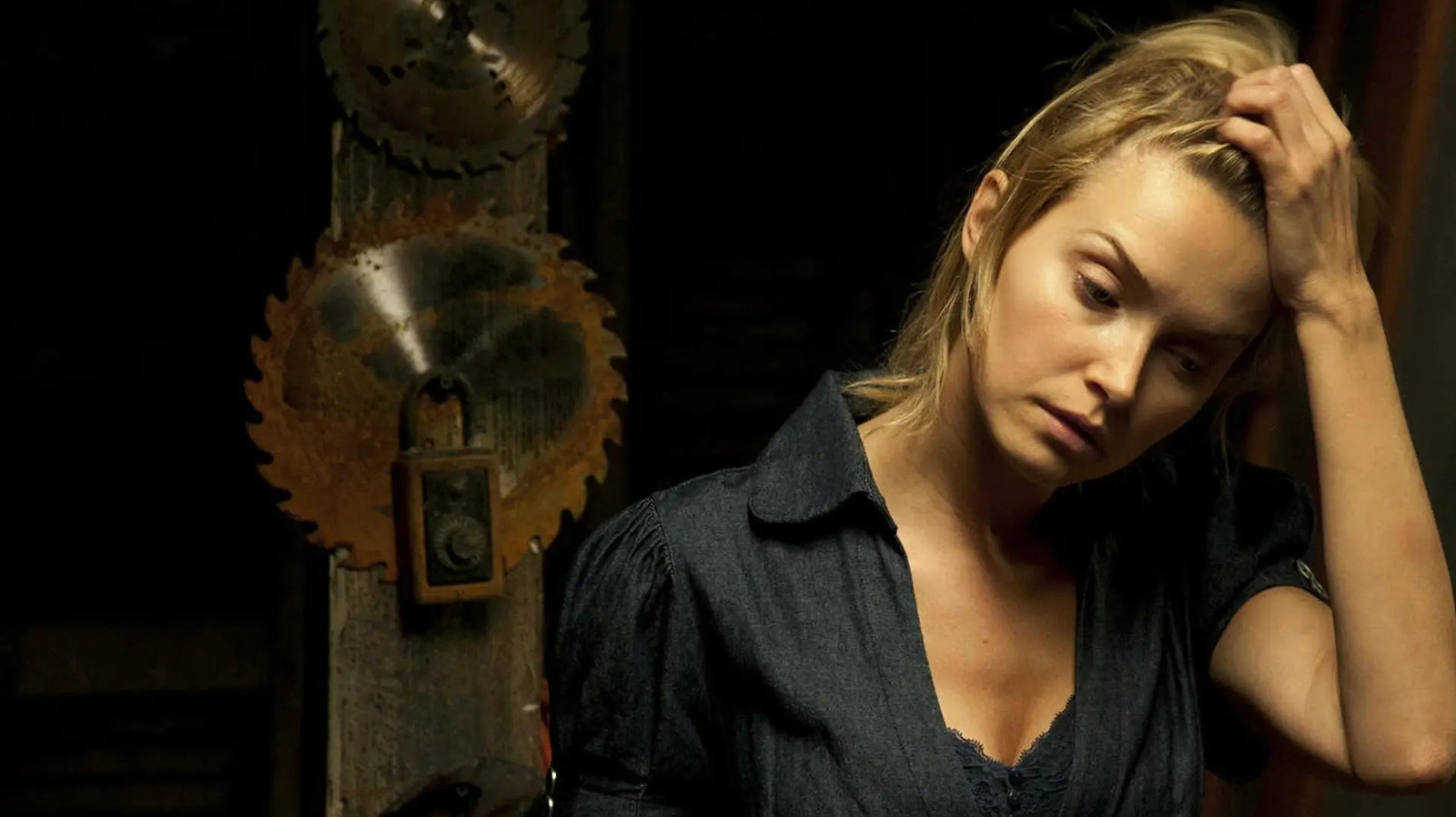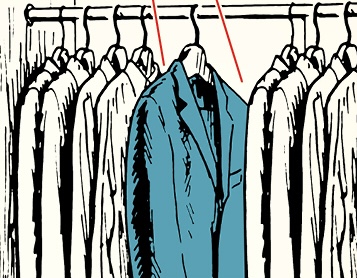‘Virus’ – Revisiting the Comic, the Novel, and the Movie Jamie Lee Curtis Calls “Unbelievably Bad”
The movie Virus did not officially scuttle across screens until 1999, but its biomechanical horrors first sprang to life a bit earlier. The road to screen adaptation was not straightforward for Navy SEAL turned writer Chuck Pfarrer; he first pitched his high concept to Universal Pictures, only to then have it land at Dark Horse […] The post ‘Virus’ – Revisiting the Comic, the Novel, and the Movie Jamie Lee Curtis Calls “Unbelievably Bad” appeared first on Bloody Disgusting!.

The movie Virus did not officially scuttle across screens until 1999, but its biomechanical horrors first sprang to life a bit earlier. The road to screen adaptation was not straightforward for Navy SEAL turned writer Chuck Pfarrer; he first pitched his high concept to Universal Pictures, only to then have it land at Dark Horse Comics. Upon the series’ success, Pfarrer tried his luck again with Universal. This time, though, producer Gale Ann Hurd was there to help get Virus optioned as well as find a potential director.
It was in 1995 that Universal first approached John Bruno about helming Virus. Initially, the visual effects artist was hesitant about directing a feature, and Pfarrer’s screenplay was a major factor in that uncertainty; he found it to be too dense and complicated for his liking. Yet after a talk with colleague and friend James Cameron, Bruno eventually accepted the offer, providing that he could make changes to the story. Bruno and Species franchise scribe Dennis Feldman revised the script together, which led to their changing the nationality of the haunted ship from Chinese to Russian, making the computer virus into an electricity-based entity from space, and generally adapting the original comic rather than Pfarrer’s newer treatment.
Spread across four issues, Dark Horse’s Virus (1992) follows the crew of the Electra as they first survive a Pacific typhoon, then battle the monsters lurking inside of a hulking and seemingly empty Chinese seacraft. Similarly, the movie has the diverse crew of the Sea Star, a dwindling tugboat captained by Donald Sutherland’s Everton, discovering the Vladislav Volkov and the biomechanoids aboard that, like their comic equivalents, cannot be allowed to escape via transmission. And helping Jamie Lee Curtis and William Baldwin’s characters evade death is now Joanna Pacula’s Nadia, the sole Russian survivor.

Image: A page from the Virus comic series, written by Chuck Pfarrer and illustrated by Howard Cobb.
The discrepancies between the cinematic adaptation and its source material are noticeable yet also nothing outrageous. Character names have largely been changed, with the exceptions of Foster (Curtis) and Richie (Sherman Augustus), but it is clear who everyone else is channeling, based on his or her function in the story. Leading man Steve Baker (Baldwin) is an approximation of his more macho parallel, Averil, and Apia is switched out with a deckhand named Hiko (Cliff Curtis). Pacula’s Nadia fills in for Mallone, the only other female character from the comic, and Sutherland’s Captain Everton endures that same horrific transformation in store for Captain Powell.
Naturally, the Virus comic plays out like a movie, given its beginnings and Pfarrer’s original intentions, however, the comic’s breakneck pacing does not leave room for anything besides constant emergency situations and adrenaline-fueled action. In addition, the scant downtimes have the characters barely pondering the origin or purpose of their adversaries. In the movie, though, a straight answer for the aliens’ arrival is given; they are, like the Sea Star crew, here to salvage. In their case, for spare body parts after deeming humans nothing more than a virus. While that bit of information might have been best inferred, moviegoers can appreciate the clarification.
Virus is dismissed as just another helping of streamlined genre fare, but in its defense, the movie attempted to add a shred of meat to a barebones plot. Reading the comic series helps make that distinction clearer. Nevertheless, for a more full-clad experience of the same story, S. D. Perry’s novelization does the job and then some.
Bruno expressed his approval in the tie-in book’s foreword: “The film was completed by the time I read the final novelization of Virus. I was ecstatic. Here was the story as I had always imagined it. Through all the various drafts of the screenplays. A seafaring tale with all the ideas (all the best ideas) completed as a continuous story, right there on the page. I could take my time to savor the moments. Taste them. I could spend time with Foster, Steve, or the Captain at my own pace. […] That is why I’m so happy with the way [Stephani] Danelle Perry finished the story, expanding on the original idea. Filling in the gaps. She made it her own. The way I hoped it would be.”

Image: The Virus novelization by S. D. Perry.
The Tor Books-published novelization was released in August of 1998 to coincide with the movie’s slated summer premiere. However, plans changed, and Virus was pushed to October before finally ending up in January of ‘99. The delay could have been owed to the fact that Curtis’ more highly anticipated horror pic, Halloween H20: 20 Years Later, was scheduled a week before Virus’ original opening date. And maybe bad buzz, following the first postponement, led to the ultimate destination of January a.k.a. a dumping ground month. Not everyone puts stock in the dump-months theory, but Virus’ glut of negative reviews — Roger Ebert compared the movie to the equally disliked Deep Rising, and Variety’s Joe Leydon called it “derivative” — only reinforce the notion.
Despite the movie’s bad press, S. D. Perry’s literary companion is an enjoyable read that, in part, surpasses its celluloid counterpart. That part in question, of course, pertains to those characters who came across as one-dimensional and underdeveloped on screen. As an alternative, Perry makes the cast more engaging. The story unfolds near exactly the same as it does in Bruno’s version, although now there is bonus insight into the Sea Star’s motley crew as they fend off the metallic menace.
What Bruno and Feldman had originally planned for Foster and her shipmates, in terms of characterization and background, was rescued from the cutting room floor and restored in the novelization. Perry conjured up a proper — not to mention dread inducing — journey before ever revealing the biomechanoids. In the meantime, the author probed the interiors of each Sea Star crewmember, exposing their flaws and innermost thoughts. Most everyone in this mixed lot is as testy and discontent as their screen variants, but now the source of that restlessness is transparent.

Image: The cast of Virus includes William Baldwin, Cliff Curtis, Sherman Augustus, Joanna Pacula and Jamie Lee Curtis.
The literary depiction of Foster, the ostensible protagonist of Virus, is hoping to forge her own path after only being known as an admiral’s daughter. Or as Richie likes to call her, a “rich bitch.” Truth be told, the Sea Star’s navigator resents her privileged upbringing as much as those around her, and that bitterness comes out during Foster’s flagrant defiance of authority. Particularly when she and Captain Everton butt heads over the chain of command. Then there is Everton who is, without question, an aggravating, sexist and conniving fellow, but he is both haunted and deadened by a failed marriage. The reminder of his unfaithful ex-wife is with him every day; she christened the Sea Star, and he never bothered to change the name.
Surprisingly, the character who Perry expounded on the most was Hiko Alailima. This extensive detailing resulted in a decent sum of Maori culture and family history. And based on the sizable spotlight she gave Hiko, it is possible that the author was trying to avoid the “noble savage” problem that often occurs with characters like Apia, Hiko’s analogous character in the comic. Also of note is how Hiko’s fate changed in the novelization; unlike in the movie, he survives along with Foster and Baker. This outcome was, presumably, due to Perry adapting a prior version of the screenplay, one proceeding the “jump scare” pick-up that later became the movie’s official ending.
Richie is another supporting character who receives more substantial attention in the novelization. On top of his unambiguous affinity for marijuana, Richie’s crucial change of heart happens more organically as well as affectingly in the book. As Richie hears Foster and Nadia’s screams of terror in the distance, he stops in his tracks to question his selfish actions; he reflects on that strange feeling of guilt stirring inside of him. Perry was wise to then articulate this sudden inner conflict: “He hadn’t needed [Foster and Nadia], that was for certain. But maybe they had needed him; maybe if he had stayed with them, they wouldn’t be screaming right now.” That internal dialogue adds just the right amount of weight to Richie’s typically off-putting character and makes his ultimate sacrifice all the more emotional.

Image: Donald Sutherland’s Virus character Captain Everton meets with the enemy.
Overall, the Virus novelization better portrays the ragtag quality of the Sea Star gang. This is an ensemble of misfits and lost souls who could not cut it in normal life anymore. Foster was habitually noncompliant, Richie’s substance affection got him booted from the Navy, Hiko never quite recovered from the loss of his parents, and Baker is commitment phobic. By airing everyone’s dirty laundry, though, Perry makes this cast of characters more accessible. The simple thrills of the humans’ clashes with the biomechanoids are undeniable, however, now there is more reason to root for them.
The major draw of Virus, in any form, is its collection of cybernetic creatures. The novelization’s own brand of nightmare fuel exists in potent spurts; Perry was morbid with each hazardous encounter. For instance, the lumbering eyesore that Richie and helmsman Woods (Marshall Bell on screen) spot early on is described as “alive, but it was only part human. The rest was metal and wire, cords and circuits set into flesh that was starting to decay. It was a man, half of his skull cleanly removed, the exposed brain glistening. Wires extended out from the gelatinous mass and twisted behind the creature. […] Cracked, dripping flesh hung from the skeletal fingers.” With vivid descriptions like that, it is easier to imagine those unnatural horrors within the Volkov.
Perry’s aptitude for gory details aside, Bruno’s movie remains the clear champion when it comes to manifesting the monsters. That menagerie of frankensteined mechani-freaks on display is touted as the flick’s one redeeming aspect — even the most disparaging critic could not help but be in awe of Steve Johnson and XFX’s craftsmanship. And not to be forgotten, Mayling Cheng’s immersive and impeccable production design also, and rightfully, comes up in the movie’s reappraisals. Without Cheng’s efforts, that solid mix of practical and digital artistry, one that elevates Virus a notch or two on the scale of sheer entertainment, would have a less atmospheric place to unfold.
Universal invested a sizable chunk of time and money into Virus, even going so far as providing it the sort of ancillary merchandise usually reserved for blockbusters. This included, on top of the novelization, a Europe-only video game and a line of toys. Needless to say, the movie underperformed, and it was ripped to shreds by audiences, critics, and later its own headliner. Jamie Lee Curtis has since said Virus is the “unbelievably bad movie” that she whips out whenever actors compare their worst-ever projects. So, indeed, there are shortcomings; from the writing to the characters, they are ever-present. Appreciators of horror and sci-fi pulp, however, can still admire the loud and flashy delivery, the array of special effects, and perhaps most of all, unique creature designs that have only gotten creepier with time.

Image: Jamie Lee Curtis’ Virus character Foster tries to escape Goliath.
The post ‘Virus’ – Revisiting the Comic, the Novel, and the Movie Jamie Lee Curtis Calls “Unbelievably Bad” appeared first on Bloody Disgusting!.
What's Your Reaction?



































